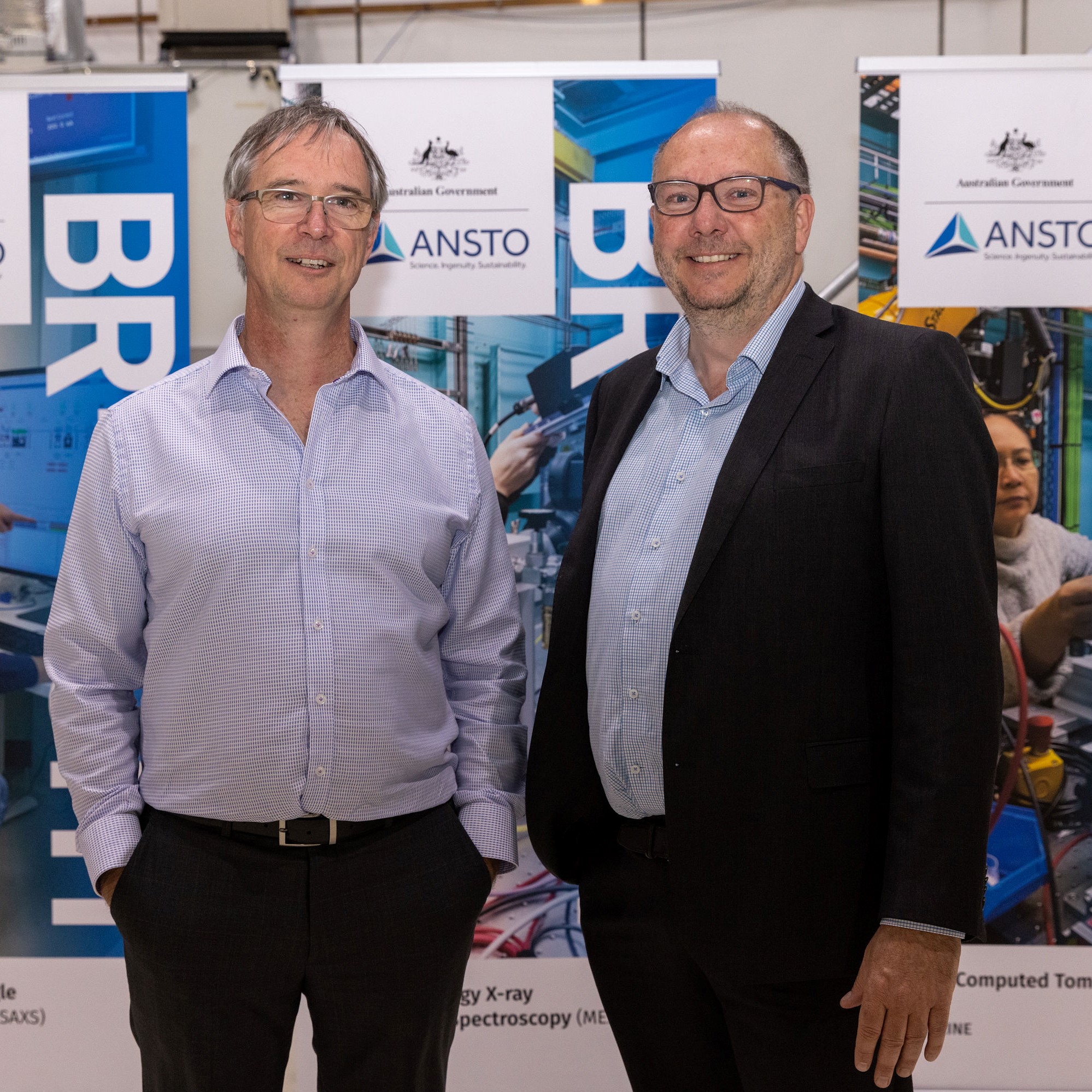12 December 2022

Professor Michael James (Senior Principal Research Scientist, ANSTO) with Professor Enzo Lombi (University of South Australia), who has used the Australian Synchrotron’s Xray Fluorescence Microscopy (XFM) beamline to create detailed elemental maps of plants.
The University of South Australia now has access to the Australian Synchrotron’s $100 million BRIGHT beamlines after signing a funding partnership with the Melbourne-based scientific research facility.
UniSA was welcomed as Australian Synchrotron’s latest partner at a special event held by ANSTO last Friday 9 December, attended by Professor Enzo Lombi from the Future Industries Institute.
The event, attended by more than 30 funding organisations, showcased the first of the $100 million BRIGHT Program’s brand new, state-of-the-art beamlines.
UniSA is the 32nd contributor to provide additional capital funding for the construction of new beamlines.
Since 2018, the BRIGHT Program has received joint funding from leading Australian universities and medical research institutes, New Zealand government, universities and crown research institutes, via the New Zealand Synchrotron Group, and the Australian government through the CSIRO, Defence Science and Technology Group, and ANSTO.
The program is enabling the design, installation, and commissioning of eight new beamlines at the Australian Synchrotron to meet the growing demand of these sophisticated technologies by Australian and international researchers and industry partners.
Two of these new beamlines – the Micro-Computed Tomography (MCT) and Medium Energy X-ray Absorption Spectroscopy-1 (MEX-1) – have recently commenced user operations. Two other beamlines – Medium Energy X-ray Absorption Spectroscopy-2 (MEX-2) and Biological Small Angle X-ray Scattering (BioSAXS) – will become operational in the first half of 2023.
Director of the Australian Synchrotron, Professor Andrew Peele, says the funding contributors are integral to the success of the BRIGHT Program.
“Their support has provided the means to expand and complement our suite of 10 existing beamlines and introduce world-class capabilities for Australian and international researchers,” Professor Peele says.
“These new and innovative beamlines will enable ground-breaking experiments in ways that never existed before in Australia, helping researchers to address complex issues like climate change, development of new energy technologies, food science, and disease detection and treatment.
“We’re thrilled to have the University of South Australia come on board as an additional funding contributor. This partnership will give their researchers a guaranteed allocation of access to the new beamlines, to carry out innovative experiments and deliver strong, collaborative scientific outcomes.”
UniSA Deputy Vice Chancellor: Research and Enterprise, Professor Marnie Hughes-Warrington AO says UniSA is one of the largest users of the Australian Synchrotron in South Australia.
“This investment in access for our researchers to the new beamlines will further boost our world-class research across a broad range of disciplines,” Prof Marnie Hughes-Warrington says.
Media contact: Candy Gibson M: 0434 605 142 E: candy.gibson@unisa.edu.au




